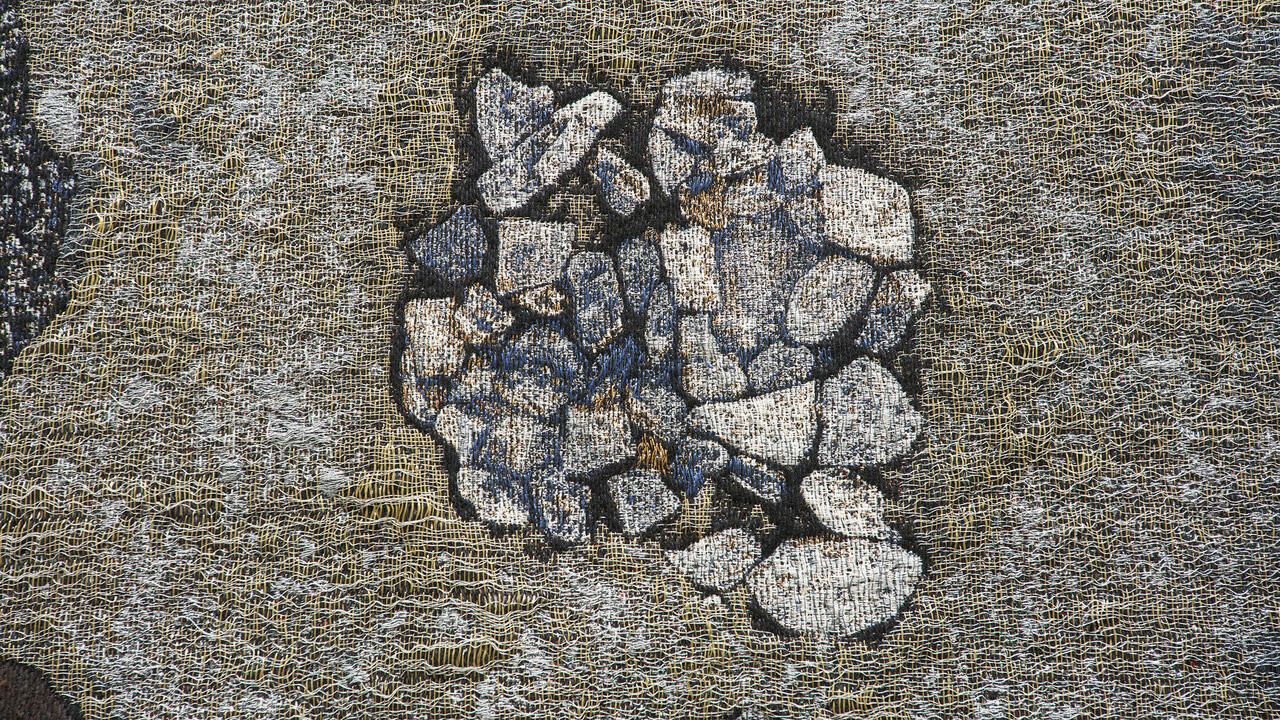Mike Bouchet
‘As much as Velázquez painted portraits of his royal patrons, I am making works for contemporary celebrities.’ Mike Bouchet’s busts of Tom Cruise demonstrate his penchant for celebrity portraiture. They lie scattered on the first floor of the gallery, some of them still in their bubble wrapping, as if they were all that was left following a break-in at Toys ‘R’ Us (Top Cruise, all works 2005). The busts don’t resemble the actor at all – the skin is too pink, not perfectly white, the brow furrowed, and the hair bouffant, in contrast to Cruise’s spiky GI crop. No matter – Bouchet’s work is more concerned with gifts of synchronicity than with lifelike precision. Soon after the exhibition’s opening Cruise appeared on Oprah vehemently proclaiming his love for Katie Holmes. You could almost ask: is Bouchet’s choice of the actor coincidence or part of the promotional furore that accompanied his resurfacing?
The stress is on ‘almost’. On the gallery’s top floor one of the Cruise heads is sunk at the bottom of an aquarium bubbling with diet cola (Long & Skinny). As the cola evaporates, thickening and leaving dark sticky traces around the top of the glass, the lurid pink face becomes increasingly invisible, leaving one to conjecture its sticky fate. Works for celebrities indeed. The diet cola is Bouchet’s own personal recipe and is also used to stain numerous canvases with cheesy imitations of various logos – cola-related and otherwise – and faux slogans such as ‘Lite Pepsi-Cola Fuck’ or ‘Bang Head Here’. In a mode of production at the opposite end of the spectrum the 1,000 Cruise heads, 100 of which are on display, were fabricated in Mexico using ‘3,520 pounds of clay from Mexico and 30 litres of paint from Mexico’.
The style in which this supplementary information is presented mimics the hand-out sheets used by the Dia Art Foundation, known for its monopoly on big, clean, white displays of the great American Minimalist works of the 1960s and 1970s but also for its impressive stewardship of Land art sites. Bouchet brazenly and hilariously rips off Dia (and Walter de Maria) with The New York Dirty Room. From Canal Street on the Lower East Side, in an area of Manhattan mostly filled with Chinese grocers and electronics shops, a look into maccarone’s storefront reveals the brilliant spectacle of crumbly brown sod stretching from the plate glass façade to the back of the room; the earth seems to be pushing through the partition into the gallery’s entrance corridor. The room is a replica of Walter de Maria’s The New York Earth Room (1980–ongoing), on permanent display a mile north, in SoHo. The difference between the works can be read in their respective titles: Bouchet’s Dirty Room is filled with a mix of topsoil from DIY suppliers Home Depot and compost excavated from Rikers Island, New York City’s own local penal colony in the East River. The scent of The New York Earth Room and its Canal Street bootleg differ accordingly.
Bringing Rikers to Earth art could just be a tired critique of the great white forefathers of American Conceptual art. But the importance lies less in Bouchet’s conflation of the elevated and the profane than in his adept employment of different economies of scale. When set against each other, or in this case mixed together, the produce of New York’s favourite DIY store and New York’s biggest prison fire off an appropriately grotesque chain of associations. Bouchet may be aimlessly throwing ideas around in the hope that they spark, but at times this tactic is impressively successful. Gifts of synchronicity such as Cruise’s reappearance in the public eye, or even the Mexican Zapatistas’ tentative re-emergence, help the work seem apropos, not just tinged with ennui.
However, even as Bouchet holds up a mirror to some dodgy contemporary realities, he can’t help ending up implicated within them. In the last week of June the New York Fire Department issued citations to maccarone for The New York Dirty Room’s violations of fire codes and safety regulations. In order to avoid being shut down, the gallery – in collaboration with Bouchet – removed half the soil and dug a narrow trench around the Dirty Room’s periphery to serve as a means of emergency egress. Unfortunately this capitulation to bureaucratic browbeating prompts a reconsideration of the tone of Bouchet’s work. Was it, after all, just another form of celebrity portraiture? Its acidity lost (see Cruise’s corroding pink bust), the tidy square replacing the Dirty Room is in danger of being reduced to little more than an act of ineffective provocation. Bouchet’s work may reflect the moment, but that moment in New York, with its absurd net of rules and regulations and ever increasing rents, is a sadly empty one.
















